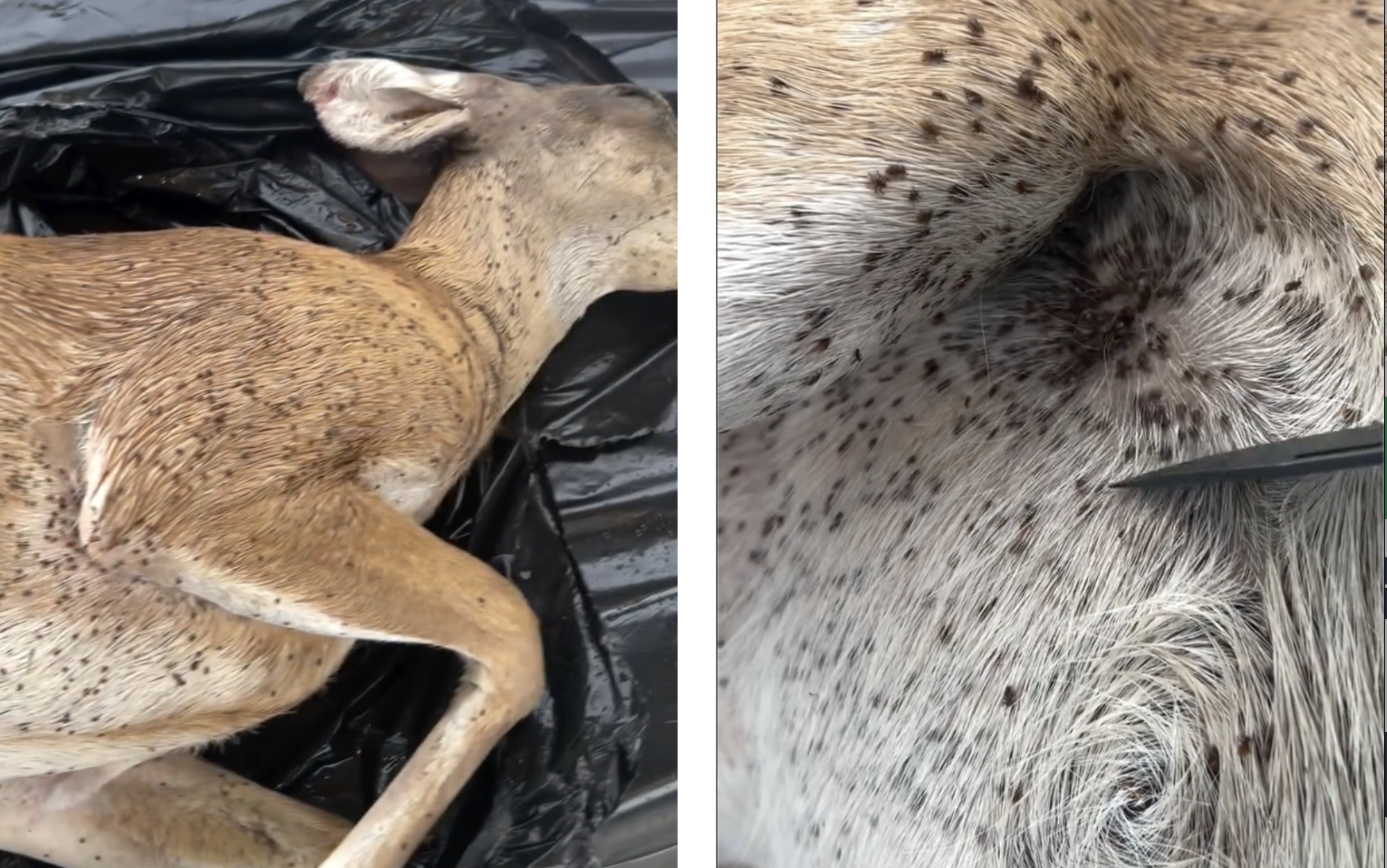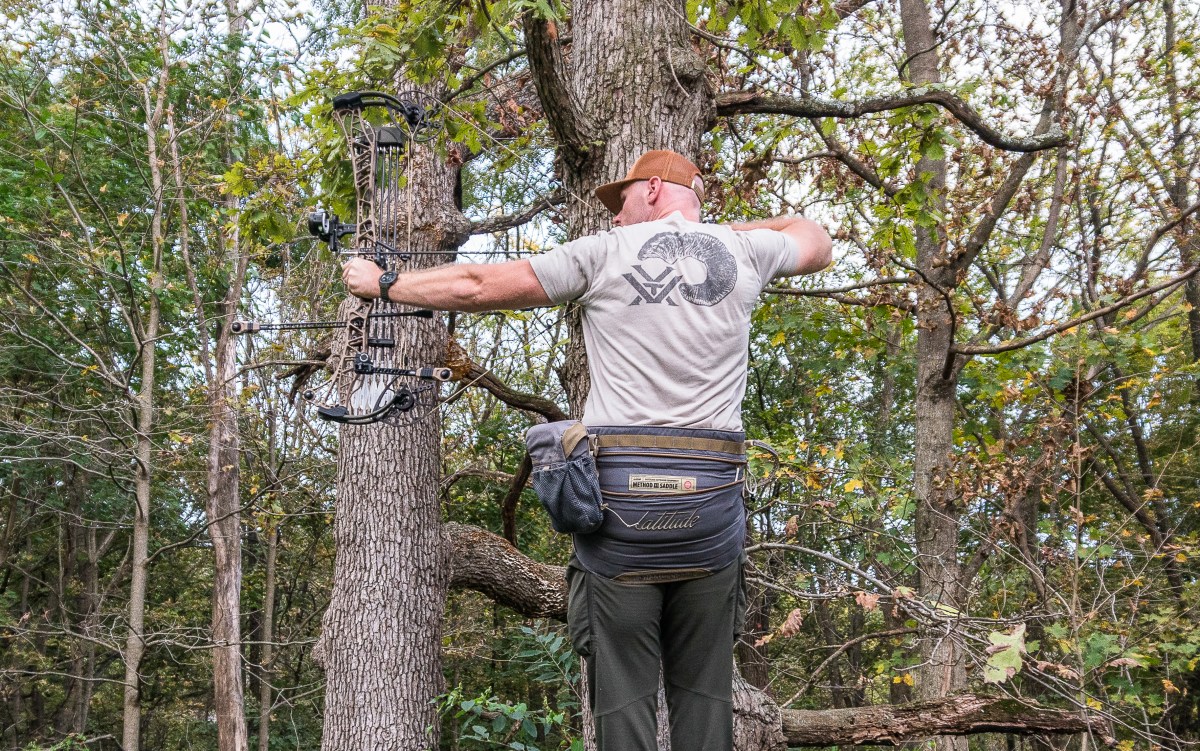Deer Crawling With Ticks Is a Nightmare and a Warning

A short video posted by Kip Adams, Chief Conservation Officer at the National Deer Association, has gone viral on social media, and for good reason. The clip shows a dead deer swarming with thousands of crawling ticks. But Adams says this skin-crawling video is more than just nightmare fuel. It’s a warning.
“I’ve been a wildlife biologist for about 30 years,” Adams tells Outdoor Life. “I’ve seen some crazy and cool stuff across the country. But I’ve never seen anything quite like that.”
The deer was used as part of a necropsy session held on Sunday during an NDA Deer Steward class near Hanna, Oklahoma, on Muscogee (Creek) Nation land. The mature doe was harvested under a state-issued depredation permit and stored overnight in a cooler before being used for the class. When Adams laid it on the table the next morning, the ticks became horrifyingly visible.
“I looked down and couldn’t believe the number of ticks. There were thousands of them. I pulled out my phone because I wanted to share it with my colleagues at work,” Adams says. “I didn’t expect it to blow up online like it did.”
Some online commenters speculated that the crawling insects on the deer were “keds” — a type of parasitic louse fly. Adams says those people are mistaken.
“Yes, there were a few louse flies. That’s to be expected,” Adams says. “But the vast majority of what you see in that video are ticks — mostly black-legged ticks and quite a few Lone Star ticks.”
Read Next: I Got Alpha-Gal (The Tick-Borne Disease That’s a Hunter’s Worst Nightmare)
Adams says the location had a lot to do with the number of ticks swarming the deer carcass. The animal came from an area of Oklahoma with dense vegetation and no recent prescribed fire, which can create a perfect storm for ticks.
“This region tends to produce deer with heavier parasite loads,” Adams says. “But this was an extreme case, even for there.”
Despite the grotesque scene, the doe was in surprisingly good health. Adams, who has aged thousands of jawbones, aged her as a mature doe, one that is at least 5 ½ years old. But she was probably older than that.
“Based on the amount of wear on the teeth, this deer was probably a lot closer to 10 years old than it was to five,” Adams says. “All of the incisors in the front were completely worn away, and the premolars and molars in the back were slicked right down.”
Although the doe was relatively old for a whitetail, Adams also noted that it was lactating, meaning it had successfully birthed a fawn earlier this summer.
For adult deer, ticks are mostly an irritation. But for fawns, tick infestations can be fatal, especially in the first weeks of life.
“Young fawns don’t move much. That’s their survival mechanism,” Adams says. “In areas that have lots of ticks, they will just cover the fawns. They’ll be all around their eyes, nose, and mouth. In those cases, ticks can actually kill fawns.”
Ticks Are Spreading Across the U.S.
The video also highlights a growing concern that affects more than just deer: the increase of tick-borne disease in the U.S. Black-legged ticks — commonly called deer ticks — can transmit Lyme disease, anaplasmosis, babesiosis, ehrlichiosis, and alpha-gal syndrome, a potentially life-altering red meat allergy. And tick populations have expanded their range across the United States over the past several decades.
“I think part of it is that our climate is just warmer than it’s been in the past,” Adams says. “That has allowed ticks to move much farther north. They are also active for more of the year. Black-legged ticks, for example, can be active any time the temperature is above 32 degrees.”
That expansion has had direct consequences for humans, with tick-borne illnesses on the rise across the country. The CDC estimates nearly half a million people in the U.S. are diagnosed with Lyme disease each year.
“This isn’t just something that just impacts hunters,” he says. “It impacts anybody who wants to go outside. Increased tick populations and the spread of tick-borne diseases impact all citizens of the U.S.”
But there may be hope for controlling tick numbers — and it starts with fire.
Read Next: Vampire Ticks Are Ravaging New England Moose. Hunting Could Help
Ongoing research from Craig Harper at the University of Tennessee is exploring how prescribed burning can impact tick populations. Early findings suggest that fire could be an effective tool for reducing ticks, in addition to its known benefits for habitat and forage.
“It’s encouraging,” Adams says. “We’re finally starting to get data that shows fire helps with ticks, too.”
Read the full article here









